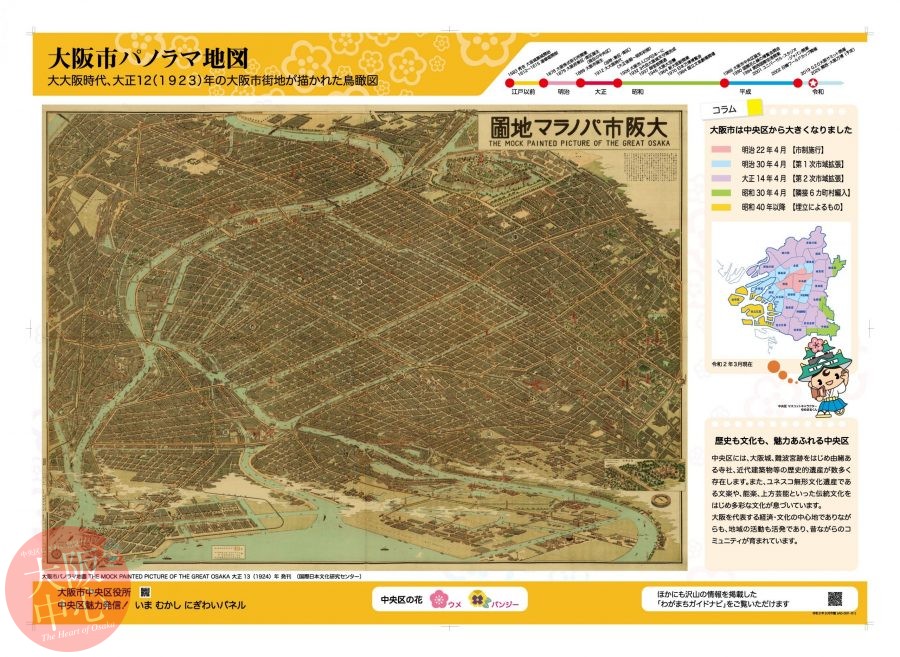
A0D01 – Panoramic Map of Osaka City A bird’s-eye view of the city of Osaka in 1923, during the Dai-Osaka (Great Osaka) era.
The Rich History and Culture of Chuo Ward Chuo Ward is home to a number of his …
中央区の歴史をパネルにしてみました。江戸時代絵図から現代の写真まで、歴史ある中央区のを絵と写真で解説。
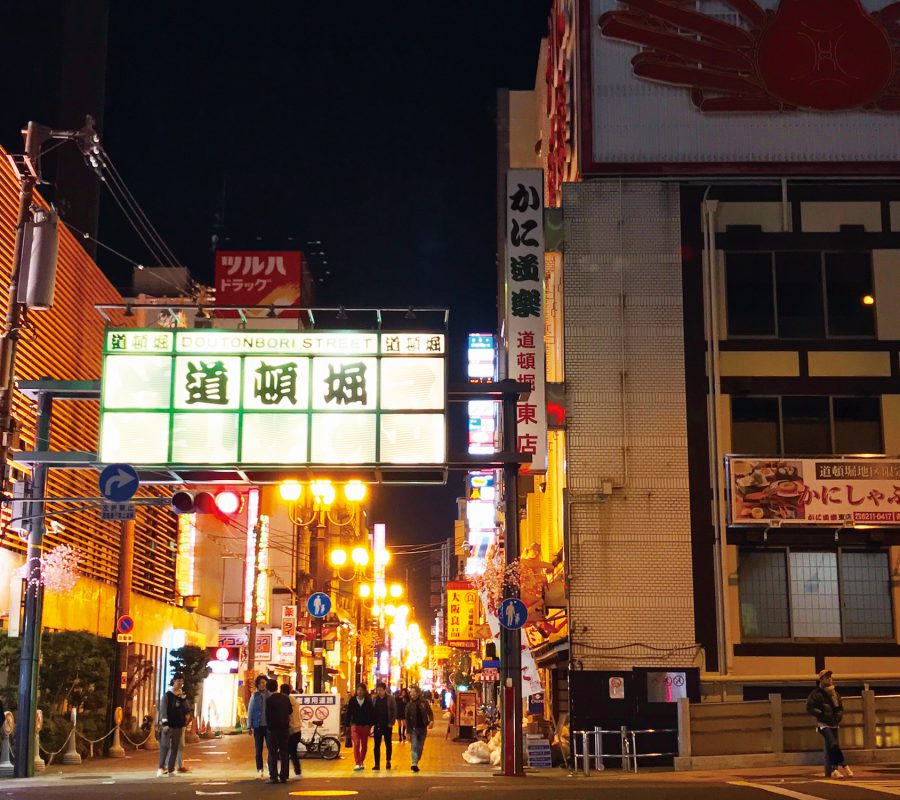
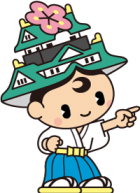
After the excavation of Dotombori, theaters from all over Osaka began to gather in the area, and it developed as a theater district. The five main theaters, known as the Dotombori Goza – Kadoza, Naniwaza, Nakaza, Asahiza, and Bentenza – were representative of the theaters in the area, and Dotombori thrived along with the Goza as Japan’s largest theater district.
In 1999, Nakaza was the last of the Goza to finally close its doors, but even today theaters such as Shochikuza continue to carry on the Kamigata performance culture that once thrived in so many theaters in this culturally significant Dotombori area.
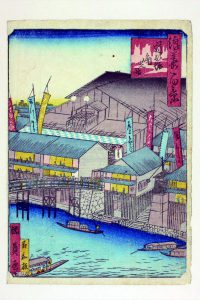
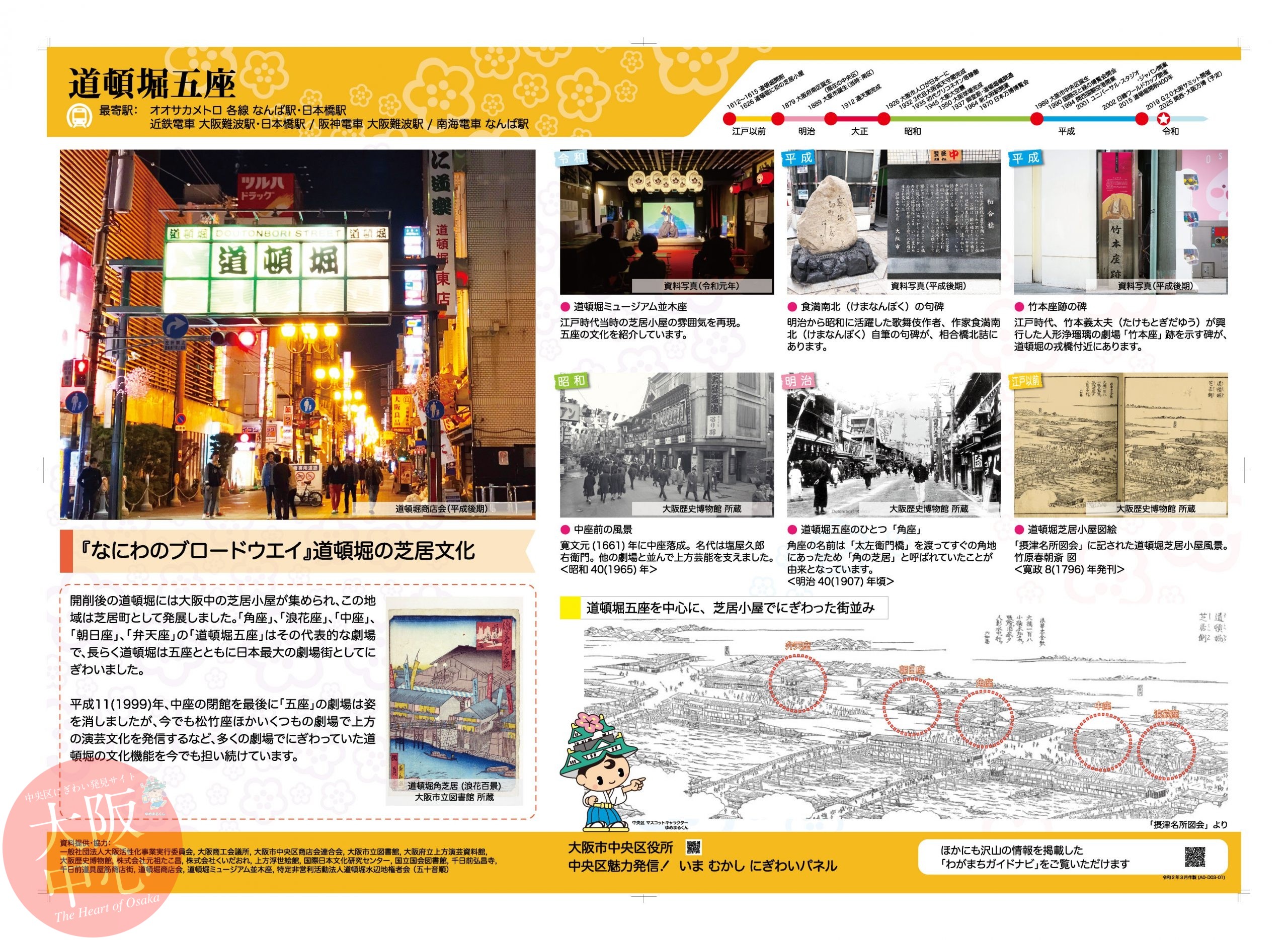

The Rich History and Culture of Chuo Ward Chuo Ward is home to a number of his …

Dotombori: The Landmark of a Bustling City Doton, who was involved in the cons …
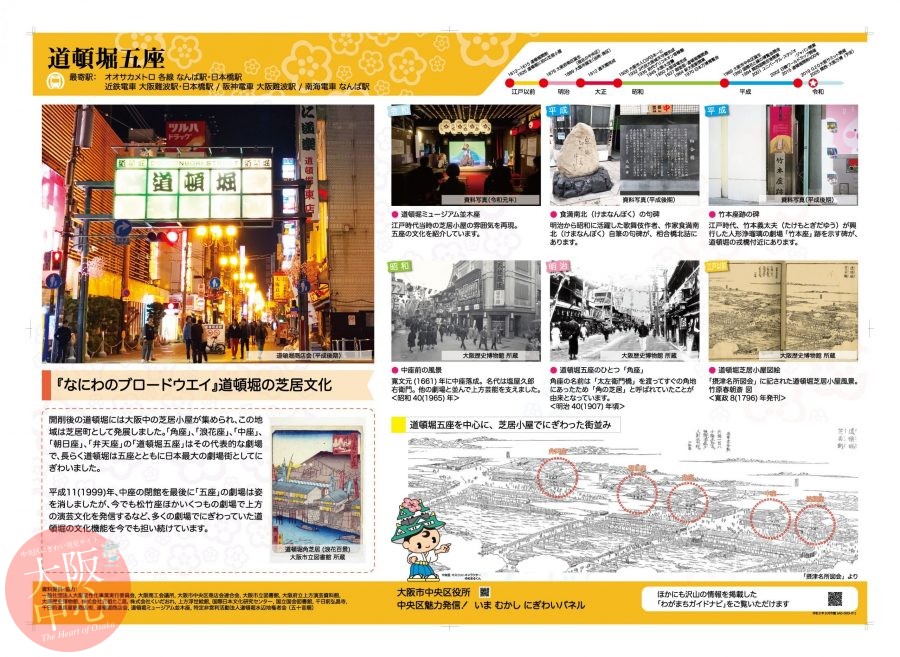
The Broadway of Naniwa: Dotombori’s Theater Culture After the excavation of Do …
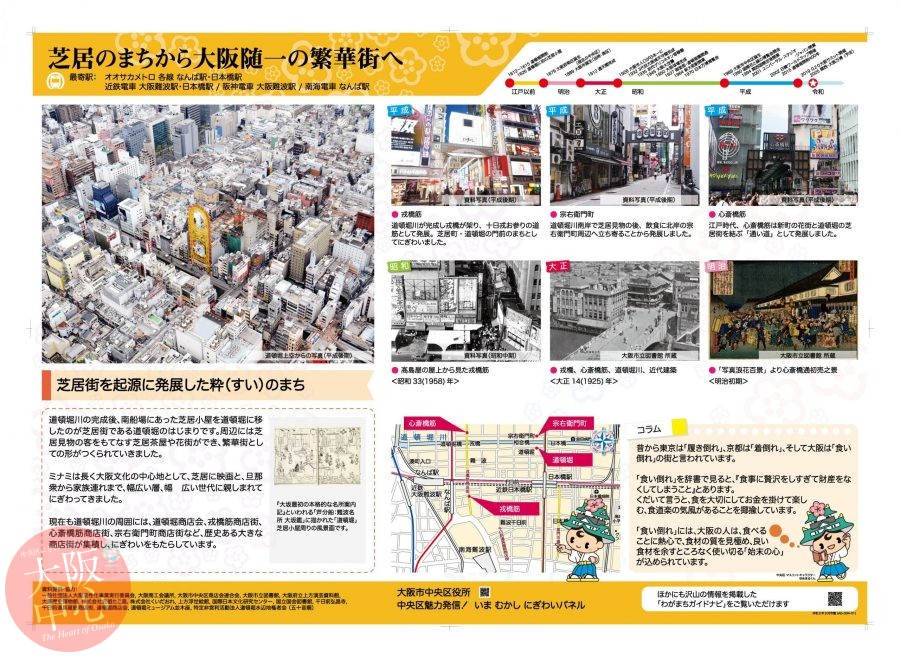
A stylish area with its roots in the theater district After the construction o …
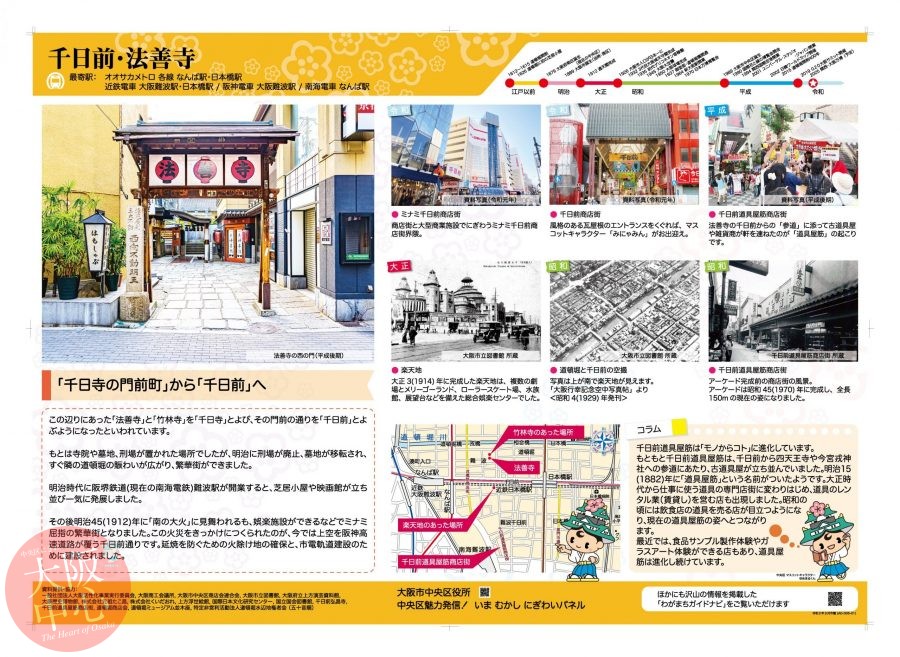
Evolving from the temple town of Sennichidera to Sennichimae It is said that H …
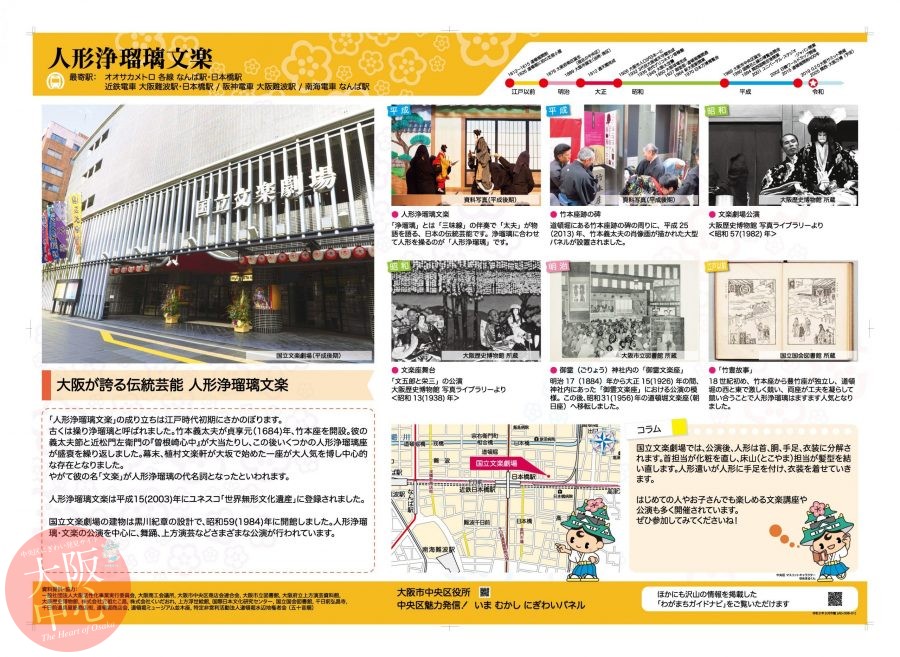
Ningyo Joruri Bunraku: A proud traditional performing art of Osaka The origins …
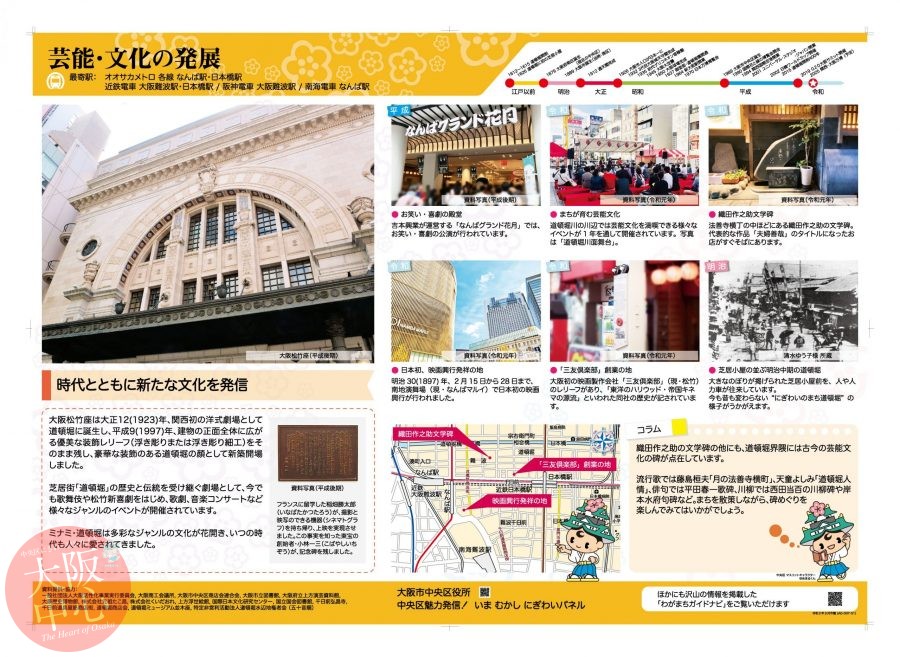
Disseminating new culture that reflects the times Osaka Shochikuza opened in D …

Ebisubashi Bridge has become a world-famous tourist attraction. It is said tha …
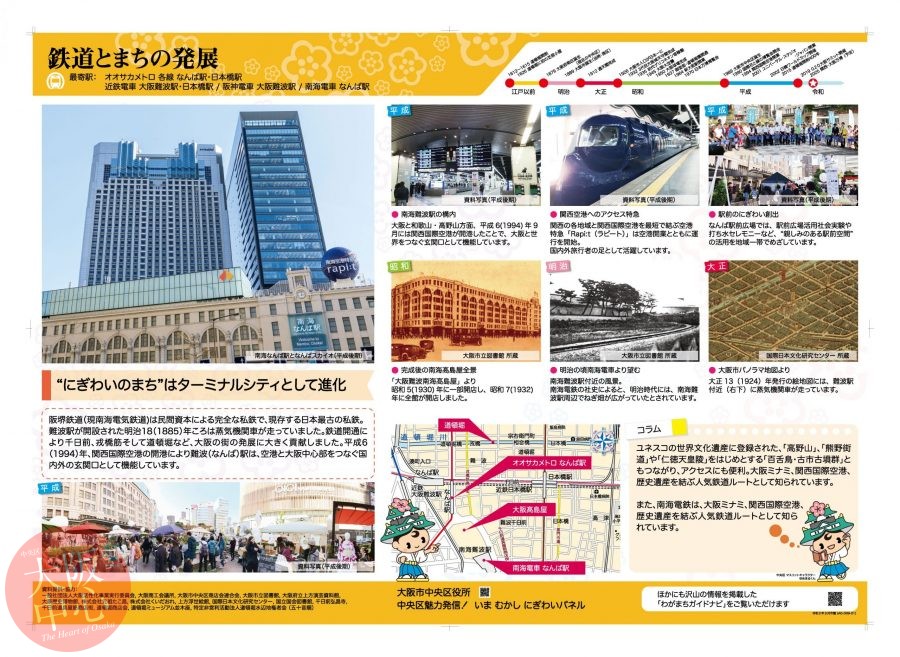
A bustling city evolving into a hub for travel Hankai Railway (now Nankai Elec …
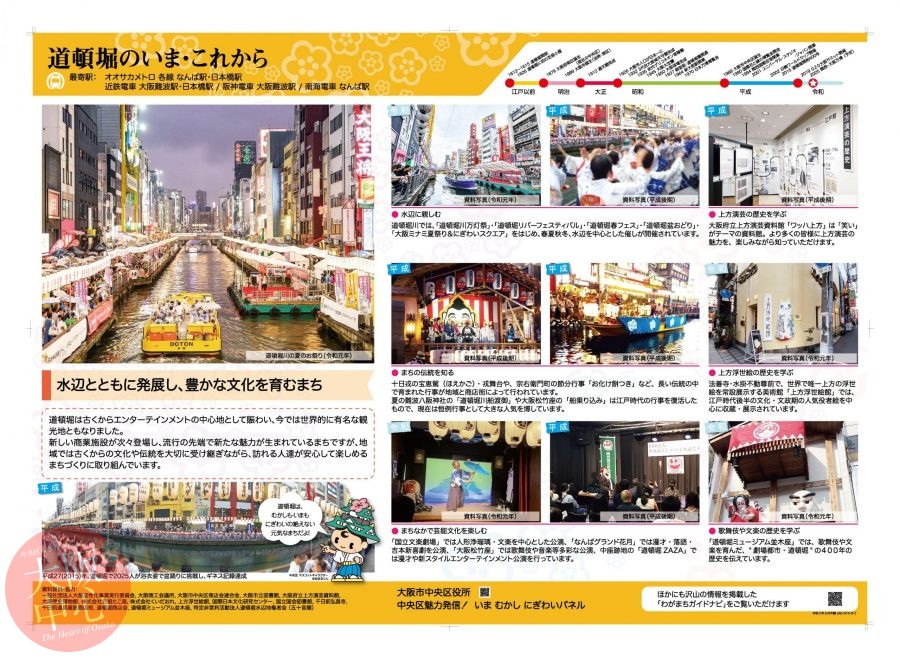
Developing the waterfront and nurturing a rich culture Dotombori has long been …